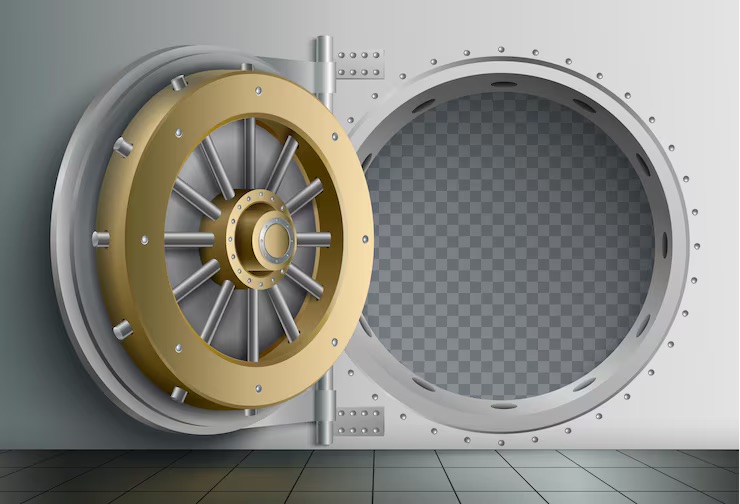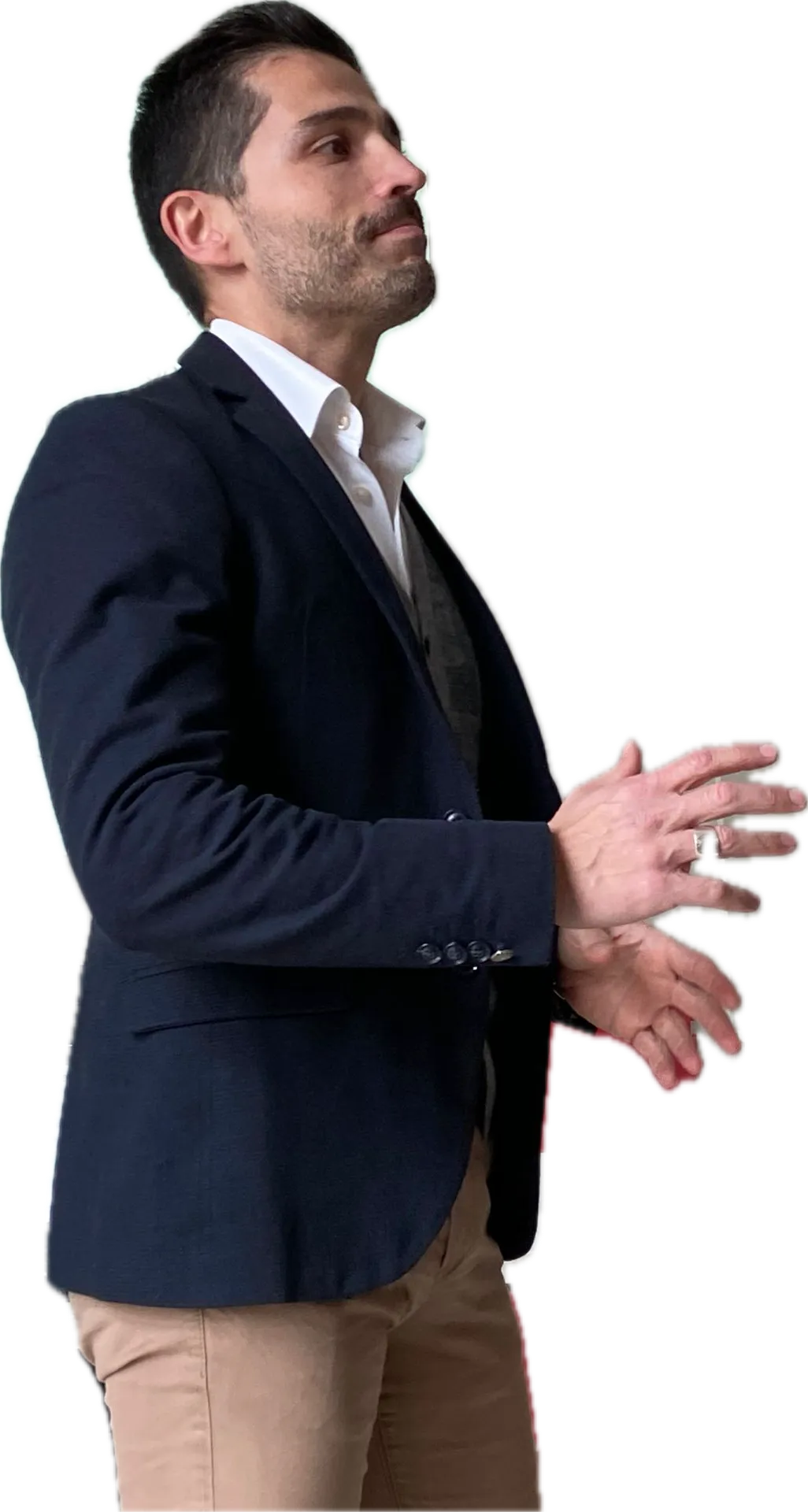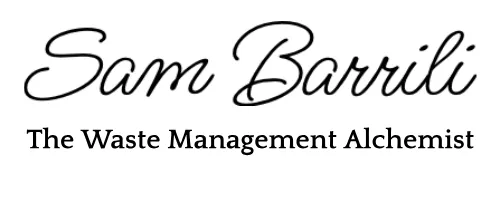
Why Landfills Are America’s Hidden Vaults of Raw Materials
I’ve spent the last years with my boots deep in landfills.
Not talking about “visits,” “consulting days,” or “inspections.”
I mean real work: excavating 40-year-old waste cells, separating the materials, transforming dirty forgotten trash into clean, valuable secondary raw materials—metals, plastics, fuels, aggregates, fibers—everything industry is desperately looking for right now.
And here’s the truth:
Landfills are not waste repositories. They are vaults.
Vaults of copper.
Vaults of aluminum.
Vaults of plastics that can be converted into fuel.
Vaults of rare components buried inside old electronics, appliances, and industrial scraps.
Every time I open a landfill cell, I don’t see trash.
I see inventory.
👉 Book a 20-minute call with Sam: https://sambarrili.com/schedule-free-20min-call
THE REALITY MOST PEOPLE MISS: LAND FILLS UP, BUT VALUE DOESN’T DISAPPEAR
When a landfill is closed, people assume “it’s done.”
But what I see—because I’ve excavated it myself—is a perfectly preserved archive of high-value materials that never lost their commercial power.
Take an average 40-year-old American landfill.
Across the U.S., we have more than 8,000 of them sitting untouched, locked, and decaying.
Inside each one?
A treasure chest.
Look at these average recovery yields per every 1 million tons of excavated buried waste:
----------------------------------------------
| Material Category | Average Recovery % |
----------------------------------------------
| Ferrous Metals | 3–6% |
| Non-Ferrous Metals | 0.6–1.2% |
| Plastics (SRF feed) | 12–18% |
| Paper/Fibers | 8–12% |
| Glass/Aggregates | 25–35% |
| Soil Fraction | 30–40% |
----------------------------------------------
Now translate that into raw value:
---------------------------------------------------------
| Material Category | Market Value ($/ton) | Output |
---------------------------------------------------------
| Ferrous Metals | $180–230 | 30,000–60,000 t
| Non-Ferrous Metals | $900–2,000 | 6,000–12,000 t
| Plastics (SRF) | $60–150 | 120,000–180,000 t
| Aggregates | $5–15 | 250,000–350,000 t
---------------------------------------------------------
Even before touching the plastics-to-fuel opportunity, the numbers explode.
👉 Book a 20-minute call with Sam: https://sambarrili.com/schedule-free-20min-call
THE COST DIFFERENCE: LAND FILLING VS LAND FORTUNE
Traditional mining is expensive because nature buried the ore.
Landfill mining is profitable because humans did the burying for us.
Here’s the simplest comparison you’ll ever see:
------------------------------------------------------------
| Step | Traditional Mining | Landfill Mining |
------------------------------------------------------------
| Exploration | $10–50M | $0.15–1.5M |
| Permitting (time) | 3–7 years | 6–18 months |
| Mine Development | $50–800M | $0–10M |
| Processing Plant | $100–2,000M | $5–50M |
| Tailings Management | $50–500M | $2–30M |
| Time to Cash Flow | 5–10 years | 3–12 months |
------------------------------------------------------------
If you’ve ever wondered why mining companies fear market volatility, this is why.
A new mine costs between $1 and $3 billion before it produces one kilogram of metal.
A landfill project starts producing revenue in months.
And I’ve seen it repeatedly.
Mining waste moves cash fast—because the material is already extracted.
👉 Book a 20-minute call with Sam: https://sambarrili.com/schedule-free-20min-call
WHY LANDFILLS WORK LIKE INDUSTRIAL VAULTS
Traditional mines have grades.
Landfills have layers of products.
Every time I excavate a landfill, I see decades of consumer and industrial history:
1970s construction leftovers
1980s appliances full of copper
1990s electronics with precious metals
2000s plastics perfect for SRF
2010s textiles and fibers
Each decade is a geological stratum—
but instead of minerals formed over millions of years,
you get ready-made industrial materials.
This is why landfill mining is not “sustainability.”
It’s not “ecology.”
It’s not “green.”
It’s business. Efficient business.
The type that entrepreneurs can scale quickly and governments can support without politics.
👉 Book a 20-minute call with Sam: https://sambarrili.com/schedule-free-20min-call
REAL EXTRACTION RESULTS FROM THE FIELD
Let me give you a real-world, on-the-ground style chart—based on the averages of the sites we worked on.
Material Output Per 100,000 Tons of Excavated Landfill Waste
----------------------------------------------------
| Material | Tons Recovered |
----------------------------------------------------
| Ferrous Metals | 4,800 t |
| Non-Ferrous Metals | 900 t |
| Plastics (SRF Feed) | 15,000 t |
| Aggregates | 32,000 t |
| Soil Fraction | 38,000 t |
| Residuals | <10,000 t |
----------------------------------------------------
Now attach market values:
-----------------------------------------------------
| Material Category | Revenue Range ($/ton) |
-----------------------------------------------------
| Ferrous | $180–230 |
| Non-Ferrous | $900–2000 |
| Plastics (SRF) | $60–150 |
| Aggregates | $5–15 |
-----------------------------------------------------
Total direct revenue potential from 100,000 tons of excavated waste:
$6.8M to $14.1M
And that’s without:
energy recovery
landfill life extension revenue
land repurposing
carbon credits
municipal subsidies
operational fees paid by cities
When we include the full spectrum of income, the real number goes above $20M depending on the site.
👉 Book a 20-minute call with Sam: https://sambarrili.com/schedule-free-20min-call
THE ADVANTAGES FOR COUNTRIES
Countries with landfills hold a distributed network of natural resource hubs:
No need for exploration
No geopolitical dependency
No deep mining risk
Raw materials near industries
Faster economic cycles
Look at this conceptual graphic showing time to raw material supply:
-----------------------------------------------
| Source | Time to First Output |
-----------------------------------------------
| New Mine | 5–10 years |
| Recycling Plant | 12–36 months |
| Landfill Mining | 3–12 months |
-----------------------------------------------
This is why landfill mining is a national strategy, not a local project.
👉 Book a 20-minute call with Sam: https://sambarrili.com/schedule-free-20min-call
THE ADVANTAGES FOR ENTREPRENEURS
If you own a scrap yard, a landfill, a transfer station, or you work in the waste or construction sector—
landfill mining is the most profitable expansion opportunity available today.
Why?
Because the supply is free.
The materials are already there.
And municipalities often pay you to clean the site.
Entrepreneurs love:
predictable margins
low CAPEX
fast returns
scalable operations
multiple revenue streams
And landfill mining delivers all of them.
Here’s a simple profitability chart for a standard 100,000-ton project:
---------------------------------------------
| Item | Value |
---------------------------------------------
| Revenue (Materials) | $6.8–14.1M |
| Revenue (Services) | $2–6M |
| Total Revenue | $8.8–20.1M |
| Operational Costs | $4–8M |
| Net Margin | 40–60%+ |
---------------------------------------------
Margins that traditional mining can only dream of.
👉 Book a 20-minute call with Sam: https://sambarrili.com/schedule-free-20min-call
THE FINAL WORD: LANDFILLS ARE NOT PROBLEMS—THEY ARE DISTRIBUTED MINES
I’ve worked inside landfills across continents.
In every country, I learned the same thing:
Waste is not the end of a product.
It’s the beginning of a new industry.
When you mine a landfill, you’re not chasing sustainability.
You’re building a national resource network, one site at a time.
You’re unlocking:
new materials
new energy
new land
new jobs
new profits
And the best part?
You don’t need a billion dollars.
You don’t need a decade.
You don’t need to fight nature.
You simply need to open the vault.
👉 Book a 20-minute call with Sam: https://sambarrili.com/schedule-free-20min-call
To Your Success
Sam Barrili
The Waste Management Alchemist

Sam Barrili
Sam Barrili I'm known as the go-to guy for helping waste management companies execute growth strategies I started my journey in this field in 2009 when I finished my degree in Toxicological Chemistry and joined a wastewater treatment company to develop its market. Since then, I helped dozens of waste management companies in America and Europe increase their annual profits by over 25 million dollars thanks to my SAM Method.


Sam Barrili
I'm known as the go-to guy for talking about business strategies and growth strategies for waste management companies.
I started my journey in this field in 2009 when I finished my degree in Toxicological Chemistry and joined a wastewater treatment company to develop its market.
Since then, I helped dozens of waste management companies in America and Europe increase their annual profits by over 25 million dollars thanks to my SAM Method.
If you want to know if I'm a good fit for you, read an article or watch a video.
If you find it helpful, I’m probably a good match.
If not, that's OK too.
Call +1 (801) 804-5730
Email: [email protected]
